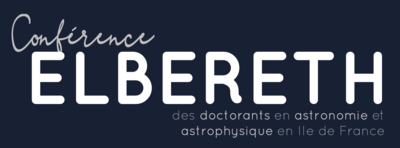Orateur
Description
Primitive asteroids within the solar system are of scientific interest because they recorded the chemical and physical processes that occurred during the planetary formation in the protoplanetary disk.
The Hayabusa2 space mission (JAXA), launched in 2014, studied the asteroid Ryugu and collected samples from its surface. This is the first mission to collect samples of a C-type asteroid, supposed to contain primitive materials. On December 6th, 2020, 5.4 g of samples were brought to Earth by the Hayabusa2 spacecraft. They were stored in a clean chamber that preserves them from any atmospheric contamination in the ISAS (Institute of Space and Astronautical Science, Sagamihara, Japan) Curation Facility. At this time, they were characterised in a non-destructive way by several instruments. One of them, MicrOmega, is a near-infrared (0.99 – 3.65 µm) microscope developed by the Institut d’Astrophysique Spatiale. In June 2021, some samples were extracted from the Curation Facility and allocated to several analytical teams, using additional techniques (sometime destructive) to obtain complementary information about the composition of the grains.
The analysis of the complete collection of the samples down to the microscopic scale by MicrOmega, enables us to characterise the mineral and organic composition of Ryugu grains and the links between the different compounds. This will give new insights on the formation of Ryugu and the different alteration processes (space weathering, aqueous alteration, thermal metamorphism, …) that modified the composition of Ryugu and its parent body.
Day constaints
I'm not available on Wednesday 23th, but both Thursday 24th and Friday 25th are fine !
| Field | Planetology (including small bodies and exoplanets) |
|---|

